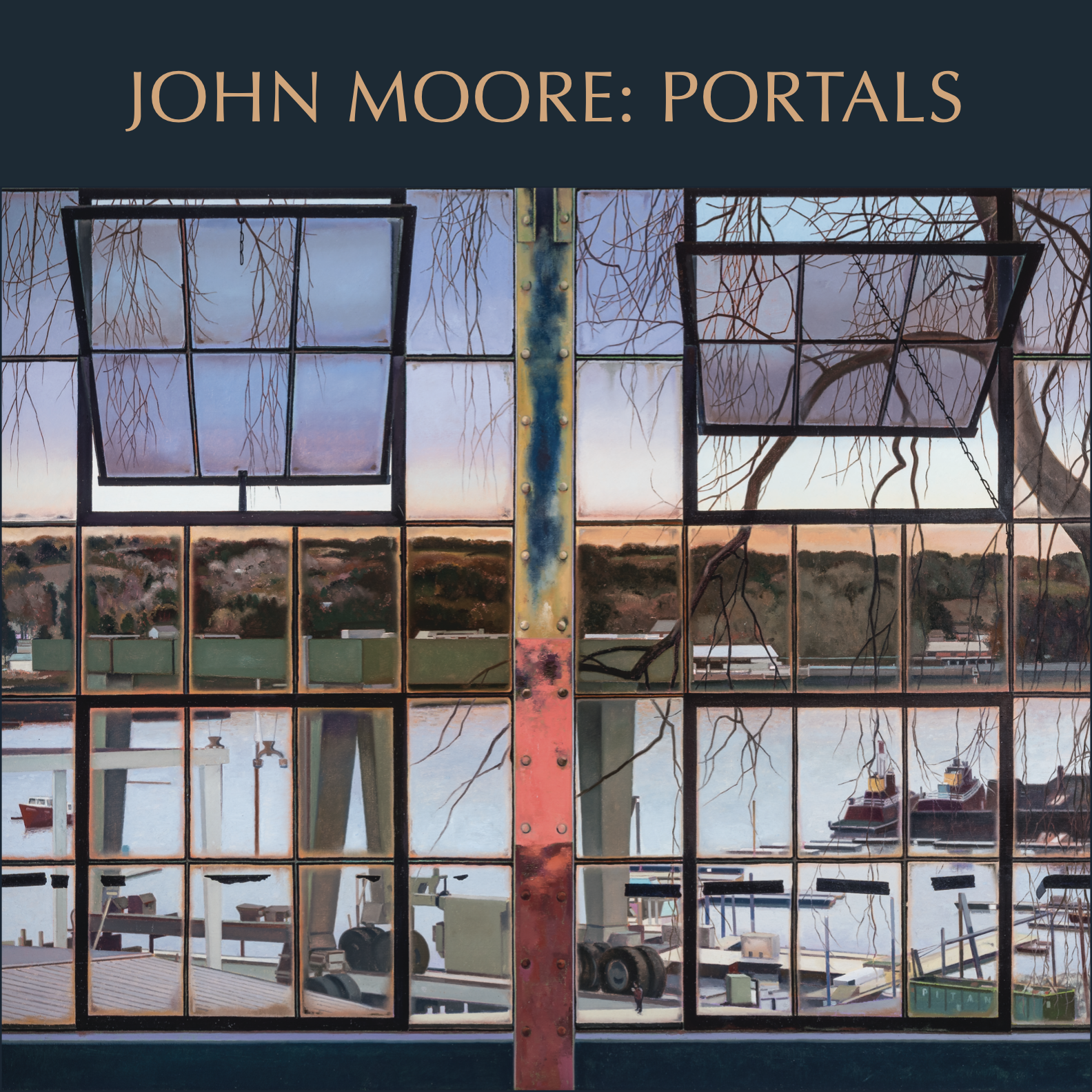
John Moore: Portals
Writers Suzette McAvoy, John Stomberg, Carl Little, and Rossana Warren
Published by Marshall Wilkes
Hardcover, 144 pages
11 x 11 inches
82 Color Plates
ISBN: 978–0–9839670–8-8
Price: $60.00
TO ORDER CONTACT MARSHALL WILKES
PHONE 207-266-5199
EMAIL karin.wilkes@gmail.com
Read More
JOHN MOORE: PORTALS presents the work of American artist John Moore (b. 1941) by bringing together an esteemed group of art historians, poets, curators, and critics who responded to Moore’s canvases through prose and verse. Writers Carl Little,Suzette McAvoy, John R. Stomberg, and Rosanna Warren make art-historical and literary connections from Nicholas Poussin
to Bob Dylan. Poems by Vincent Katz, Wallace Stevens, Rosanna Warren, John Yau, and Geoffrey Young are featured throughout, and in her afterword Christina Kee shares the vision of art collector William Louis-Dreyfus (1932–2013) who acquired forty Moore paintings.
Critical essays by the writers explore four thematic sections: Windows, Urban, Industrial, and Elegies. “Moore embraces the idea of illusionistic painting,” writes McAvoy about his window paintings, “but constructs his own reality. . . a synthesis of the seen and the imagined.” Stomberg, who writes about Moore’s urban paintings, notes that the paintings “find him looking for echoes of the past with both feet firmly placed in the present.” In his essay about Moore’s industrial paintings, Little notes how, like the painter Charles Sheeler, Moore seeks “to combine the memory and the present in a given painting.” And in addressing Moore’s elegiac works, Warren views the painter as “both a classicist and a savvy late-twentieth-, early-twenty-first-century artist working in full awareness of the idioms of abstraction, grids, and color field.”
Published by Marshall Wilkes, John Moore: Portals pairs a comprehensive collection of 82 color reproductions thematically with insightful essays that place the artist in the larger canon of American realism. The poet John Yau sums up John Moore’s work: He uses paint, Yau writes, to arrive “at a threshold moment when the daily world, and everything in it, suddenly holds our attention, and we look at it as if we are seeing all of it for the first time.”
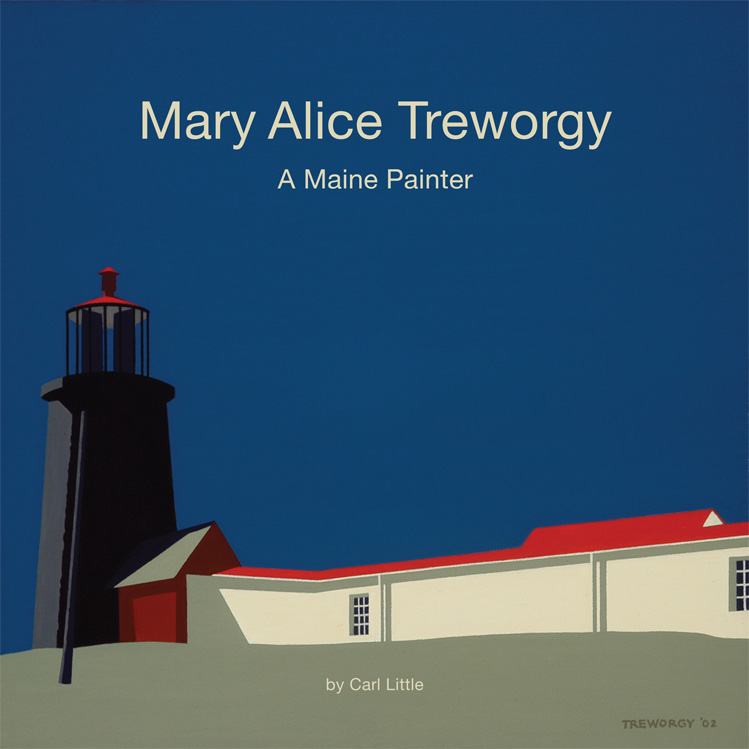
Mary Alice Treworgy: A Maine Painter
by Carl Little with foreward by Frederick Stecker
Published by Marshall Wilkes
Hardcover, 108 pages
10 x 10 inches
104 Color Plates
ISBN: 978–0–9839670–7-1
Price: $35.00
Read More
Mary Alice Treworgy: A Maine Painter follows the artistic career and life of Mary Alice Treworgy, a modern-day precisionist who found inspiration on Monhegan Island and elsewhere in Maine and New England. Author Carl Little traces Treworgy’s journey in art, from a childhood infatuation with paint to studies at the Massachusetts College of Art, a career in graphic design, and critical notice as a painter.
Born in Baltimore in 1936, the great-granddaughter of board game creator Milton Bradley, Treworgy lived for much of her life in Brunswick, Maine, where she raised her family and maintained a studio. Treworgy studied with noted painters, including Joseph Nicoletti, Thomas Cornell, and Wolf Kahn, and attended the Vermont Studio Center on several occasions.
In 1991, Treworgy discovered the work of the American precisionists, which further sharpened her geometric approach. Her work was shown at Maine Coast Artists and numerous galleries, reviewed by critics Philip Isaacson and Pat Davidson Reef, and juried into three biennials at the Portland Museum of Art.
An introduction by Episcopal minister and author Frederic Stecker offers a personal account from his perspective as a member of the Monhegan summer community and as a collector of Treworgy’s paintings. “Mary Alice has taught us well,” he writes. “She paints the object’s essence; there is really more to see and to understand if you remove the distractions.”
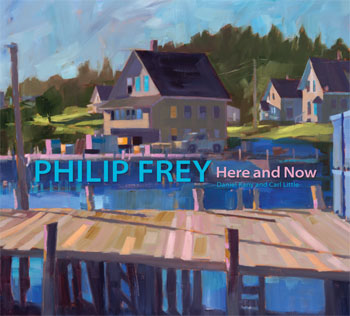
Philip Frey: Here and Now
by Daniel Kany and Carl Little with introduction by George Kinghorn
Published by Marshall Wilkes
Hardcover, 100 pages
10.25 x 9.25 inches
104 Color Plates
ISBN: 978-0-9839670-6-0
Price: $28.95
Read More
Philip Frey: Here and Now In the past twenty years, Philip Frey has developed into one of Maine’s finest landscape painters. Known as a brilliant colorist, Frey paints Maine’s harbors and islands with a bold palette that captures the light and moods of his home state, from the streets of Ellsworth and Portland to Monhegan and Acadia National Park.
With an introduction by curator George Kinghorn, and essays by art critics Daniel Kany and Carl Little, Philip Frey: Here and Now presents the first in-depth look at Frey’s body of work. Kinghorn highlights Frey’s remarkable ability to render complex motifs by way of dynamic planes of color, while Kany and Little place the artist in an art-historical context. In response to Frey’s role in Maine’s evolving contemporary art scene, Kany sums it up best: “Frey’s art occupies the nexus between contemporary painting and brushy traditionalism. If there is a focus to this new direction in Maine
painting, his art is it.”
This book offers readers thoughtful commentary and a glorious, full-bodied color representation of Frey’s work, much of it created over the last decade. His paintings are imbued with an immediacy that reflects his commitment to being “in the present”, whether responding to a panoramic view from the summit of Cadillac Mountain, a working
waterfront, or an intimate interior.
Frey: Here and Now is a gift to aficionados of Maine art. Here is a painter whose sense of place is profound and whose art is a feast for the eyes.
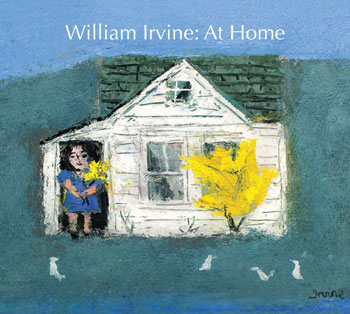
William Irvine: At Home
Published by Marshall Wilkes Publishing
Publication Date July 2018
Hardcover, 100 pages
9.75 x 8.75 inches
86 Color Plates
ISBN: 978-0-9839670-5-7
Price: $28.95
Read More
William Irvine: At Home William Irvine believes that every artist is born with a small set of poems to express, and this unique collection of narrative paintings explores his signature motifs. Lending grace and delight to daily activities, his paintings show women celebrating spring with forsythia, calling in their cats at dusk, gossiping, planting trees, or sunbathing sans clothing. Men sip their morning coffee, repair windows, gather fishing gear and wait for the fog to lift. Mermaids, sheep, and sleeping sailors populate rugged, elemental scenes. And always, soaring overhead in the seascapes for which Irvine is best-known, there are gulls, whose cries, soaring flights, and calculated stillness captivate the painter.
Irvine moved to Maine in 1968 and was immediately drawn to the fishing villages of Corea and Jonesport, whose tidy houses reminded him of the white farms dotting the green hills of Scotland, where he grew up. William Irvine: At Home joins William Irvine: A Painter’s Journey in establishing Irvine as a Maine and American master.
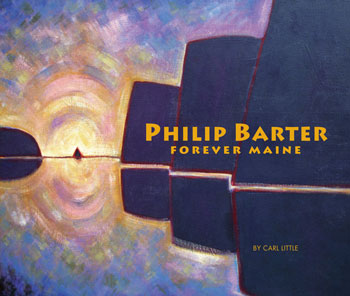
Philip Barter: Forever Maine
by Carl Little
Published by Marshall Wilkes
Hardcover, 138 pages
11.25 x 9.25 inches
138 Color Plates
ISBN: 978-0-9839670-4-0
Price: $40.00
Read More
Philip Barter: Forever Maine When, in his twenties, Philip Barter (b. 1939) discovered Marsden Hartley, he felt a
calling: to further the vision of the great American modernist. This was an ambitious undertaking for a brash, self-taught artist from Boothbay, Maine, but Barter’s passion for Maine and its fiercely independent people gave his work a unique, unencumbered vision. Barter was prolific, and he spent a half-century painting the landscape of his home state, becoming the “painter laureate” of the region.
In Philip Barter: Forever Maine, award-winning author Carl Little traces the painter’s life from a formative trip to California
in the 1960s; to downeast Maine where Barter and his wife, Priscilla, made a life immersed in art and built a funky home and studio from driftwood and barn boards for themselves and their seven children; to critical acclaim for Barter in the 1990s and his most recent paintings from 2016 and 2017.
This book highlights a choice selection of masterful works that reflect Barter’s increasingly abstract inclinations in depicting Maine landscapes, from the coastal estuaries and blueberry barrens of Washington and Hancock counties to the western mountains and lakes, and north to Hartley’s iconic Mount Katahdin. Barter also explored the world beyond Maine, painting in Spain, Newfoundland, Greenland, the American Southwest, and elsewhere, employing a palette as bold as his vision of his surroundings.
Of his narrative paintings Barter says, “The narratives I paint are historical documents of the characters of Maine and the places they frequent, a roguishly, independent people whom I seek out, and try to be with, and who make this place I know the one-of-a kind place it is—forever Maine.
Quotes about the artist
“[Barter’s] reduction of forms to suggestions of elements creates a new shorthand which plays against vibrant color,” wrote Isaacson, who noted that the resulting work, had “a feeling of rightness.”
—Philip Isaacson, Maine Sunday Telegram
“The appeal of Barter's stylized renderings of trees and rivers, mountains and clouds, is powerful. His ability to extract the essence of the landscape provokes marvel. He sees the geometry of a peak, the jagged coursing of woodland streams, a snowfield's curving contours. His palette, often not for the faint of hue, underscores his lively vision.”
—Carl Little, director of the Bates College Museum of Art
“From a virtual unknown artist in 1966, when he began painting at 26, Philip Barter has emerged as one of Maine's most imaginative, diversified, and prolific artists... his reputation as an innovative stylist and eye-wowing colorist borders on wizardry..”
—Lyle Roger North, Philip Barter: The Maine Experience
“...One of Maine's leading regionalist painters. A prolific artist, his paintings, nearly two thousand in number, are scattered throughout the United States, Canada, and Europe, in both individual and corporate collections... A leading regionalist folk-art painter and interpreter of Maine's Down East experience.”
—Davistown Museum, Maine
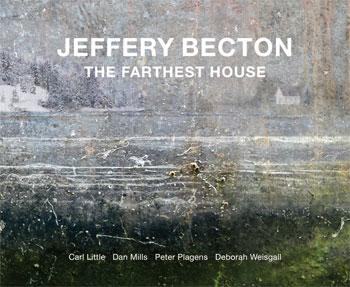
Jeffery Becton: The Farthest House
Carl Little, Dan Mills, Peter Plagens, Deborah Weisgall
Published by Marshall Wilkes
Hardcover, 108 pages
12 x 10.25 inches
68 Color Plates
ISBN: 978-0-9839670-3-3
Price: $42.00
Read More
A pioneer in the field of fine-art photography, Jeffery Becton creates provocative montages, often playing with the borders between dream and reality, interior and exterior, abstraction and representation. As art critic Philip Isaacson observed, Becton’s images “begin with photography, sometimes add painting or watercolor, and metamorphose into a medium
of their own.”
Author Carl Little offers a compelling account of Becton’s progress as an artist, from his studies in graphic design and photography at Yale in the 1970s to the creation of his signature digital montages over the past twenty-five years. He explores Becton’s fascination with vintage New England houses and their furnishings, and how the artist draws upon his surroundings on the coast of Maine and elsewhere to create surreal scenarios that hark back to René Magritte, as
well as Edward Hopper and Andrew Wyeth.
Appreciations by art writer and novelist Deborah Weisgall; Dan Mills, director of the Bates College Museum of Art; and art critic Peter Plagens help complete this portrait of a master of photo-based art. Published by Marshall Wilkes, the book features 68 reproductions of Becton’s work—montages that invite you to explore his enigmatic world in The Farthest House.
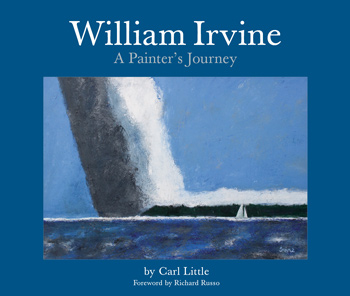
William Irvine: A Painter's Journey
by Carl Little
Published by Marshall Wilkes
Hardcover, 108 pages
11.25 x 9.25 inches
Over 100 Color Plates
ISBN: 978-0-9839670-2-6
Price: $39.95
Preview Book
The painter William Irvine’s journey in art began in the town of Troon on the Scottish coast where he was introduced to modern art through the collection of whiskey magnate Johnnie Walker. After graduating from the Glasgow School of Art and serving in the Scottish army, Irvine came of artistic age in London where he was a part of a lively avant-garde scene. Moving to downeast Maine in 1968 proved a turning point: harbors, islands and boats, the sea and the sky, inspired bold work that combined Irvine’s abstract instincts with new pictorial concepts based on the landscape.
In the ensuing forty–plus years Irvine has established himself as a Maine and American master, known for his seascapes, as well as enchanting figurative paintings and still lifes.William Irvine: A Painter’s Journey features a stunning selection of his work, from early abstractions to an array of landscapes inspired by Maine but also by Scotland, England, and France. Writer Carl Little’s text covers the painter’s life in art from his formative years in Scotland to a visit to his new studio in Brooklin, Maine. Pulitzer Prize–winning novelist Richard Russo offers an affectionate appreciation of the artist.
Read More
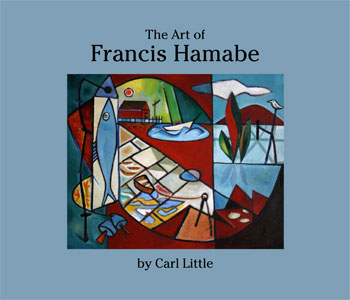
The Art of Francis Hamabe
by Carl Little
Published by Marshall Wilkes
Hardcover, 96 pages
10.25 x 9.25 inches
Over 100 Color Plates
ISBN: 978-0-9839670-1-9
Price: $35.00
One of Maine’s most beloved artists, Francis Hamabe was born in 1917 in Orange, New Jersey, to a Japanese father and Swedish mother. He served in World War II and attended the Rhode Island School of Design. Moving to Maine in 1947, Hamabe established himself as a sought-after painter, printmaker, ceramicist, and puppeteer. A dedicated teacher—he was the first art instructor at the Farnsworth Art Museum and later taught at the University of Maine at Machias—he also served as art director for Down East and Maine Life magazines and for the state’s first public television station in Orono.
The Art of Francis Hamabe offers a selection of his work, from dynamic modernist oil paintings and lively Sumi ink abstractions to his well-known screenprint posters. Writer Carl Little weaves an engaging narrative of the artist’s life and art illustrated with vintage photographs and examples of Hamabe’s witty and stylish graphic work. Paintings from the Colby and Bates College museums and the University of Maine Museum of Art are featured, along with numerous works from private collections, many of them reproduced for the first time.
Carl Little is the author of Edward Hopper’s New England, The Watercolors of John Singer Sargent, The Art of Dahlov Ipcar, and Eric Hopkins: Above and Beyond. His book Eric Hopkins: Above and Beyond won the first John N. Cole Prize from Maine Writers and Publishers Alliance. He is a regular contributor to Art New England, Ornament, and Maine Boats, Homes & Harbors. An ex–New Yorker, Little moved to Maine in 1989; he has written and lectured on Maine art ever since. His poetry has appeared in a wide range of journals as well as in Ocean Drinker: New & Selected Poems and two anthologies edited by Wesley McNair. A resident of Somesville on Mount Desert Island, Little is director of communications and marketing at the Maine Community Foundation.
Read More
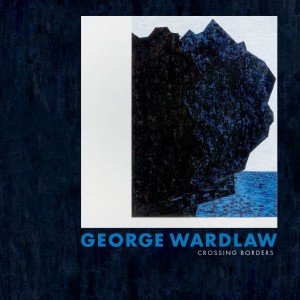
George Wardlaw: Crossing Borders
by J. Richard Gruber, Ori Z. Soltes, and Suzette McAvoy
Preface by Grace Glueck
Published by Marshall Wilkes, Inc.
Publishers, Maine and New York
www.marshallwilkes.com
Hardcover, 184 pages
11 x 11 inches
Full color throughout
86 Color Plates; 104 Color Illustrations
ISBN: 978-0-9839670-0-2
Available Now
$65.00
Crossing Borders presents over 180 full-color plates and illustrations, representing six decades of work by American artist George Wardlaw (b.1927), the first comprehensive account of this remarkable body of work. Critical essays by J. Richard Gruber, Ori Z. Soltes, and Suzette McAvoy characterize Wardlaw’s work, placing it in context with the significant art movements of his time, beginning in 1948, with non-objective painting and tracing his journey across geographical, physical, intellectual, philosophical, and spiritual boundaries.
Never confined by categories, Wardlaw explores medium, form, scale, and color as a lifelong dialogue between abstraction and spirituality. From his Baptist and Native American roots to Judaism, from the rural south to the urban northeast, from painting to sculpture and back again, Wardlaw produced series after series of profound artworks on his quest for creative and spiritual resolution.
Raised on a farm in Mississippi during the hard years of the Great Depression, Wardlaw emerged from his meager beginnings to become a member of the avant-garde art scene in New York City during the 1950s and ’60s. He went on to become an important figure in American art and an influential teacher. After serving in World War II, Wardlaw used the GI Bill to attend the Memphis Academy of Arts. He taught and studied art at the University of Mississippi with David Smith, Jack Tworkov, and Reginald Neal; was an Assistant Professor at LSU and SUNY; and was later recruited by Jack Tworkov to teach at Yale before serving as the Chair of the Art Department at the UMASS, Amherst, where he remained for the rest of his academic career.
Beginning with his first solo exhibition at the Betty Parsons Gallery in 1960, Wardlaw has continued to exhibit widely in galleries and museums, including a solo show at the deCordova Museum and Sculpture Park in 1978, and a mid-career retrospective at the Memphis Brooks Museum of Art and the Memphis College of Art in 1988. His work is in several public and museum collections, including Johnson Wax Headquarters, the Milwaukee Art Museum, the Memphis Brooks Museum of Art, and the Mississippi Museum of Art.
Throughout his career, Wardlaw devoted his life to making art, driven by his passion and desires rather than responding to popular trends. This freedom of expression yielded a significant and impressive body of work—one that reveals a unique story, both personal and universal, weaving one man’s perspective into the larger canon of twentieth-century American art.
Read More








